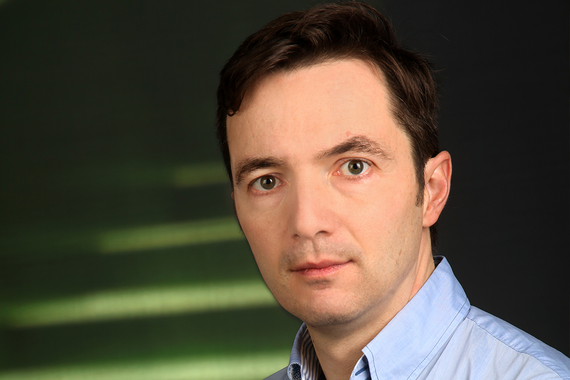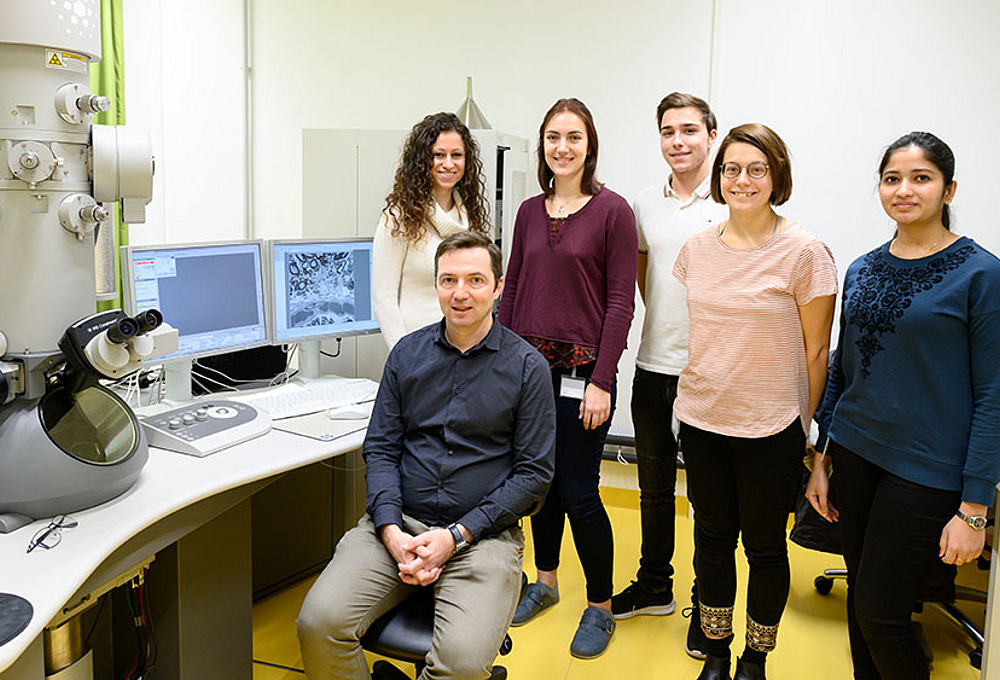-
Die Universität
- Herzlich willkommen
- Das sind wir
- Medien & PR
-
Studium
- Allgemein
- Studienangebot
- Campusleben
-
Forschung
- Profil
- Infrastruktur
- Kooperationen
- Services
-
Karriere
- Arbeitgeberin Med Uni Graz
- Potenziale
- Arbeitsumfeld
- Offene Stellen
-
Diagnostik
- Patient*innen
- Zuweiser*innen
-
Gesundheitsthemen
- Gesundheitsinfrastruktur
Forschungsteam Leitinger
Forschungsschwerpunkt Signaling
Teamleiter: Gerd Leitinger
Fokus: In der Arbeitsgruppe kommt neueste elektronenmikroskopische Methodik zur Anwendung. Eiseneinlagerungen in das humane Gehirn stehen mit neurodegenerativen Erkrankungen in Zusammenhang, und diese Einlagerungen werden mittels analytischer Elektronenmikroskope in humanen Proben präzise lokalisiert. In einem anderen Schwerpunkt werden mittels 3D-Elektronenmikroskopie dreidimensionale Modelle von neuronalen Schaltkreisen erstellt, um die Funktionsweise dieser Schaltkreise zu erforschen.
Vernetzung: Innerhalb des Gottfried-Schatz-Zentrums kooperiert wir intensiv mit den Arbeitsgruppen Wolfgang Graier, Tobias Madl und Klaus Groschner (Themenfeld Signalling) sowie mit der Arbeitsgruppe Ruth Prassl (Themenfeld Precision Medicine). Weitere Kooperationspartner*innen sind Senka Holzer, Johannes Haybäck, Stefan Ropele (Medizinische Universität Graz), Eva Roblegg (Karl Franzens Universität Graz) und Claire Rind (Newcastle University, UK). Intensive Vernetzung besteht mit dem ELMINET Graz, BioTechMed-Graz und der Österreichischen Gesellschaft für Elektronenmikroskopie.
Projekte
Connectivity of a Locust’s Collision Detection Circuit
- We can learn a lot about how a neuronal networks could function by elucidating the wiring pattern of the network. This can be done by reconstructing the neurons in 3D and by mapping their synaptic connections, so that it becomes clear which neurons within the network can communicate with each other and how numerically strong the connections are. We aim to elucidate the wiring within the neuronal network of a locust’s collision detector. This detector is special because it enables the locust to avoid colliding with objects on a collision course. We thus are using special, serial section scanning electron microscope techniques to visualize the shape of the neurons and their synapses.
- Projektdauer: 2019-2023
- Gefördert durch: FWF
- Projektpartner*innen: Claire Rind (Newcastle University, UK)
High Resolution Visualization of Iron Deposits in the Human Brain in Health and Disease
- Whereas iron is important for many life processes, a poor regulation of the iron household causes toxic chemical reactions that can even lead to cell death. Iron accumulates in certain brain areas in the ageing human brain, and it is not known why, and how, this iron storage takes place. Many neurodegenerative diseases also go along with an accumulation of iron in the brain. Here we combine analytical EM, to visualise the iron accumulation at high resolution, with quantitative magnetic resonance imaging to display the iron content in different brain areas, and mass spectrometry to measure the total iron content in these brain areas. This will enable us to study the way iron is stored in the brain.
- Projektdauer: 2016-2021
- Gefördert durch: FWF
- Projektpartner*innen: Johannes Haybäck (Medical University of Graz, Stefan Ropele (Medical Unviersity of Graz), Walter Gössler (University of Graz
Lehrstuhl für Zellbiologie, Histologie und Embryologie
Assoz.-Prof. Priv.-Doz. Mag. Dr.
Gerd Leitinger
Gerd Leitinger
T: +43 316 385 71900




